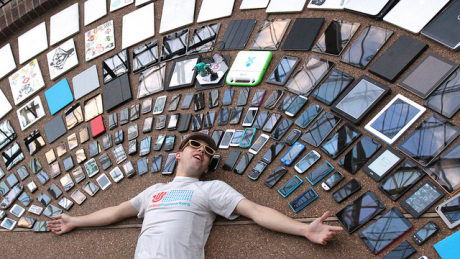
Do you ever feel like your smartphone is too smart for its own good? Or wish you could do more with your tablet than watch Netflix? Lucky for those of us who don’t find mobile devices all that intuitive, it’s actually very easy to get the most out of devices like phones, tablets and smartwatches. All it takes is a little know how.
Here are just some of the ways you can optimize your own mobile experience – most of which involve nothing more than tweaking settings or downloading an app or two.
- Know your device. What operating system does it use and how much storage space is on the device itself? If you’re an Apple fan, which generation device do you have? Are you using any cloud-based storage? Take the time to browse your device’s settings to find answers to these questions. Why? Because when you know the basics, it’s easier to learn more.
- Decide what you’ll be using your device for. We all use our devices for different things: gaming, learning, listening to music, streaming movies or television, etc. Do some research to find out which devices come with the features most relevant to your needs. It may be more beneficial to use an Apple device if you like the usability of iOS. But if you’re a gamer or Netflix junkie that wants a device with the best mobile processors and highest quality graphics for the ultimate visual experience, you should consider an Android device that features a Snapdragon processor.
- Keep your device’s OS up to date. First, these regular updates address new security vulnerabilities, so ignoring them puts your devices at risk. And second, updating as updates become available will give you a glitch-free experience.
- Play with your device’s settings. There’s almost nothing the average user can do to damage a device simply by experimenting with settings, and you may find new opportunities to customize your user experience.
- Try new apps. There are vast libraries of games out there, but check out apps designed to keep your devices safe, too. LastPass, for example, creates complex passwords. And Avast! Mobile Security & Antivirus is one of the most comprehensive free security apps around. Just be careful and only download from reputable vendors. Rogue apps are a real threat.
- Back it up to the cloud. You can back up just about everything to cloud storage and it won’t cost you much. If you’re using more than one cloud storage service, Unclouded lets you access files from Dropbox, Google Drive, Box and OneDrive via a single UI.
- Optimize your device for nighttime. Apps like Twilight adjust your screen brightness and color settings with the sun cycle, filtering the wakeful blue light emitted by smartphones and tablets after sunset. That way, you can still check Facebook before bed without it interfering with your sleep cycle.
- Use HDR mode when taking photos. High dynamic range mode ensures that light and shadows in snapshots are evenly exposed by taking two or more photos of varying exposures and combining the best parts of each into a single photo.
- Use your device like an external hard drive. Most mobile devices can function like any other form of external storage. Plug it into your computer and it should show up as an external drive that you can explore. Not only can you take files off of your device, but you can also use your phone or tablet to bring files with you in place of a memory stick.
Of course, that’s just a sampling of what anyone can do to have a better mobile experience. Depending on how deep down the enhancement rabbit hole you want to go, you can things like digitize documents with scanner apps and use your device to control a smart home or create a totally custom interface. All it takes is time, research and some experimentation!
 Jennifer Thayer is an editor @FreshlyTechy and a freelance writer who loves covering technology, sports and traveling. freshlytechy.com
Jennifer Thayer is an editor @FreshlyTechy and a freelance writer who loves covering technology, sports and traveling. freshlytechy.com










